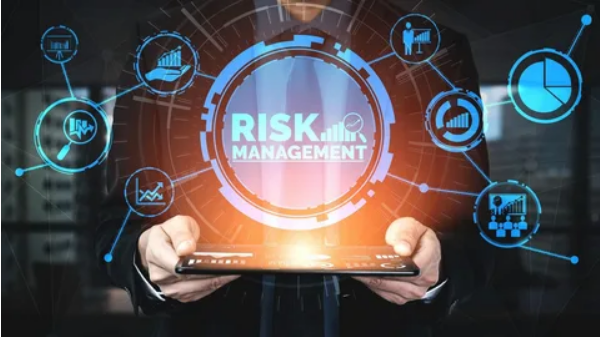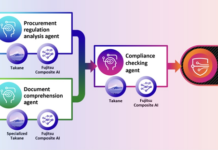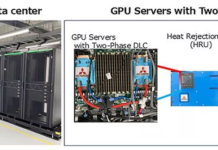Imagine a world where artificial intelligence powers critical decisions in healthcare, banking, government, and manufacturing and every model, every algorithm, must be auditable, trustworthy, and secure. In 2025, the Global AI Trust, Risk & Security Management (AI TRiSM) market is emerging as a vital foundation for the responsible use of AI. As organizations scale AI deployments, the demand for governance, compliance, transparency, and defense against adversarial threats is driving rapid growth and deeper integration of TRiSM frameworks across industries.
According to the latest DataM Intelligence report, the global AI TRiSM market reached US$ 2.34 billion in 2024 and is projected to expand at a CAGR of 16.3% to reach US$ 7.83 billion by 2032.
Expansion Beyond Pilots into Enterprise Core
In 2025, AI is no longer an experimental side project; it has become embedded in finance, supply chains, operations, customer service, and decision support systems. This shift increases the attack surface for model drift, data poisoning, unfair bias, and opacity. AI TRiSM frameworks are evolving to monitor and manage these risks continuously. Their integration with MLOps, DevOps, and governance pipelines is enabling organizations to embed trust and security into every stage of the AI lifecycle, rather than treating them as afterthoughts.
As generative AI and large language models proliferate, the complexity of entangled systems demands that TRiSM frameworks support runtime inspection, anomaly detection, behavioral enforcement, and explainability. These advanced capabilities are becoming essential tools rather than optional extras.
Regulation, Accountability, and Risk Mitigation
One of the strongest tailwinds for the AI TRiSM market is regulatory pressure. Governments around the world are introducing AI governance frameworks that mandate model transparency, auditability, and fairness. Organizations must respond with tools that provide bias detection, audit trails, compliance reporting, and accountability.
In many sectors financial services, healthcare, and public administration noncompliance risks include legal liability, reputational harm, and regulatory penalties. In 2025, AI TRiSM is becoming a “license to operate” rather than a differentiator.
Dominant Segments: Model Monitoring, Adversarial Protection, Governance
Within the AI TRiSM space, model performance monitoring and governance remains the largest component. Organizations must continuously validate model outputs, detect drift, and ensure consistency with business rules and compliance. This remains the backbone of any robust TRiSM system.
Meanwhile, adversarial defense, protecting against attacks like adversarial inputs, model inversion, or poisoning, is the fastest-growing segment. Given the rising sophistication of attackers targeting AI systems, investments in securing the AI core are surging, especially in regulated industries and mission-critical domains.
Regional Dynamics & Market Leaders
North America holds the largest share of the AI TRiSM market, driven by early adoption, maturity in AI infrastructure, and aggressive regulation. The United States, in particular, leads with demand from BFSI, healthcare, and technology sectors.
However, Asia-Pacific is emerging as the fastest-growing region. Governments in China, India, South Korea, and Southeast Asia are pushing digital transformation and AI adoption, creating urgent demand for trust and security frameworks. Localization of TRiSM capabilities—tailored to regional regulation and language contexts is becoming a key theme.
This regional shift underscores that AI TRiSM must be globally scalable but locally adaptable.
Integration, Automation & Cross-Functional Governance
In 2025, AI TRiSM is not just a security add-on; it’s becoming embedded in cross-functional processes. IT, security, compliance, data science, and business teams are collaborating to define policies, guardrails, workflows, and accountability mechanisms.
Automation is central: TRiSM platforms increasingly include automated bias detection, real-time anomaly alerts, root cause analysis, and decision justification. These systems reduce manual overhead and increase speed and precision in governance and incident response.
Moreover, AI TRiSM is integrating with existing security stacks SIEM systems, identity management, and threat intelligence providing unified visibility over both traditional and AI-specific risks.
Challenges & The Road Ahead
Despite the momentum, adoption faces challenges. Many organizations lack the necessary expertise and culture to adopt TRiSM frameworks end-to-end. The technology is still evolving, with no single vendor offering a complete solution across governance, runtime security, and explainability.
Data quality, transparency in proprietary AI models, and the evolving nature of adversarial attacks remain technical hurdles. Moreover, alignment of TRiSM tools with fast-changing business needs requires agility and continuous evolution.
On the horizon, we expect convergence: TRiSM integrated as native features in AI platforms, embedded into developer toolchains, and aligned with global regulatory standards.
Conclusion
In 2025, the Global AI Trust, Risk & Security Management Market occupies a critical position at the intersection of AI innovation and responsible governance. From a base of US$ 2.34 billion in 2024 to a projected US$ 7.83 billion by 2032 at 16.3% CAGR, the market reflects how enterprises are treating AI trust, fairness, and security not as optional extras but as foundational requirements. As AI becomes deeply integrated into business, only organizations that embed TRiSM frameworks early combining governance, automation, and regional adaptability — will sustain trust, manage risk, and maintain compliance. The 2025 landscape confirms that AI TRiSM is not just a technological trend, but a vital pillar of enterprise resilience in the age of intelligent systems.

















